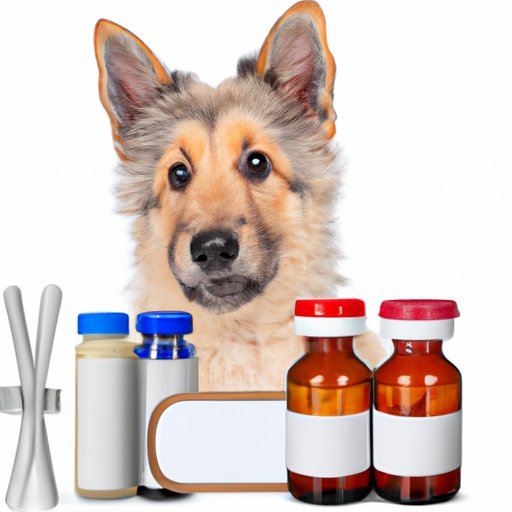
Introduction
Giving medication to a dog, especially liquid medicine can be a challenging task. Dogs aren’t always cooperative when it comes to taking their medication, leaving dog owners feeling frustrated and stressed. However, administering liquid medication to your furry friend doesn’t have to be a daunting task. With some patience, a few tools, and some helpful tips, the process can be made easy. This guide will give you a step-by-step approach to administering liquid medication to your dog.
Step-by-Step Guide to Administering Liquid Medicine
When it comes to giving liquid medication to your dog, it’s crucial to exhibit calm and confidence. Dogs can sense anxiety, which can make them suspicious and uncooperative. Follow these steps to make the process easier:
- Start by reading the medication label to ensure you get the right dosage and frequency right.
- Get your dog into a comfortable position, either sitting or standing. For smaller dogs, you can hold them gently on your lap, or place them on a table.
- Take the medication, which usually comes in a syringe or dropper, and draw the correct amount of liquid.
- Open your dog’s mouth gently. Place the tip of the dropper or syringe at the back of its tongue, and squirt the medication slowly.
- When you’re done, hold your dog’s mouth closed and rub under its chin gently to encourage swallowing.
Note that some dogs may struggle when you try to insert the syringe into their mouth. In such cases, place the medication on a spoon and let your dog lick it. If your dog spits out the medication or it dribbles out or it’s too difficult to give, don’t force it. Simply start again.
Types of Liquids Suitable for Dogs
It is important to note that not all types of liquid medications are suitable for your dog. Some medications designed for human consumption, for instance, are toxic to dogs, which is why you need to consult your vet first. In general, some of the liquids suitable for dogs include:
- Antibiotics, such as amoxicillin, metronidazole, and doxycycline
- Anti-parasitic medication
- Anti-diarrhea medication
- Cough medication
The dosage of the medication generally depends on the weight of your dog. Your veterinarian will provide you with the correct dosage to give to your dog.
Tools to Make Administration Easier
Giving liquid medication to your dog can be tricky in some instances. That’s where tools come in handy. The tools are designed to make the medication administration process easier. They include:
- Measuring cups: To ensure you get the correct dosage, measuring cups are useful.
- Droppers and syringes: These tools allow for accurate liquid medication measurement.
- Pill pockets: These are good for hiding tablets or capsules that dogs may not like.
It’s important to note that not all dogs are the same. So, you may have to experiment with multiple tools to discover the best one for your dog. The best place to start is by talking to your vet.
Alternative Administration Options
In some cases, your dog may refuse to take liquid medicine, or you may find the process too stressful either for you or the dog. Fortunately, alternative methods can be considered, including:
- Mixing the medication with food: You can mix the medication with your dog’s favorite meal.
- Compounding formulations: Your pharmacist can create a tasty flavored medication from ingredients that are not harmful to your dog.
- Pill pockets: Pill pockets are a tasty treat with a built-in pocket for the medication that can help with administering pills or capsules.
Alternative methods of giving medicine to your dog may work best for certain medications. Consult with your vet to determine which method will work for your dog’s specific needs and medication.
Anticipating Challenges and Concerns
While administering liquid medication seems easy, it can come with challenges. Some of the common challenges that you may experience while giving liquid medication to your dog include:
- The dog spitting out or dribbling out the medication.
- The dog gagging, choking, or vomiting the medication.
- The dog simply refusing the medication.
If you experience any of these problems, don’t force the medication – instead, try new and alternative methods of giving medication to your dog.
Conclusion
Giving liquid medication to your dog may seem daunting, but it doesn’t have to be. With some patience, tools, and the right approach, it can be made easier. Remember to always consult your veterinarian regarding the correct medication and dosage needed, and to anticipate various challenges and to seek help in case of concerns.




